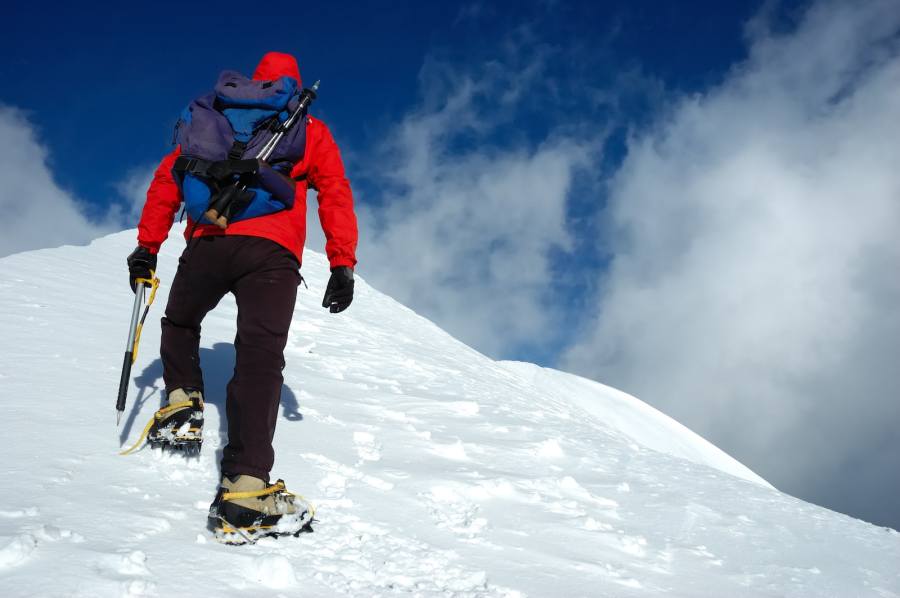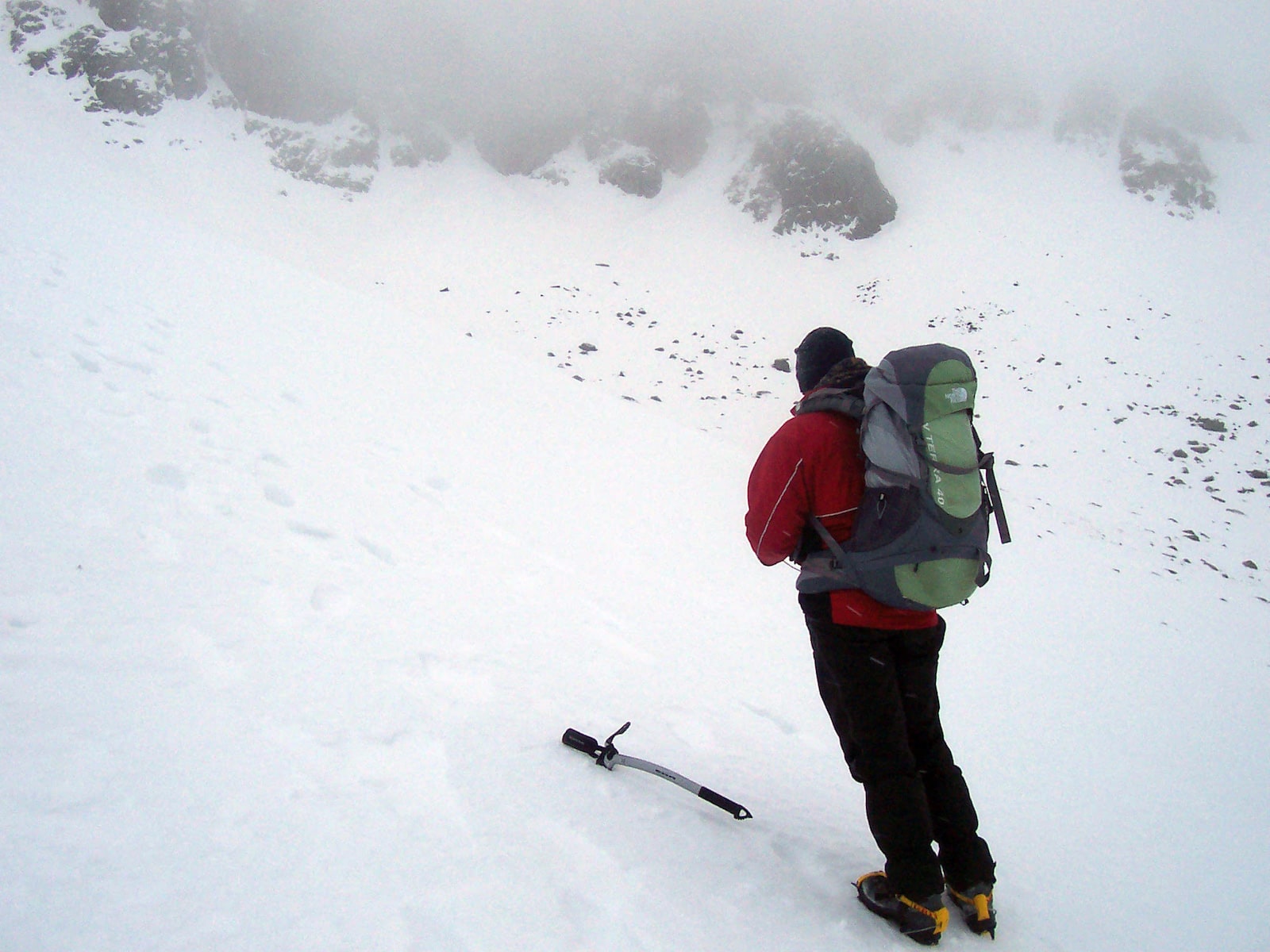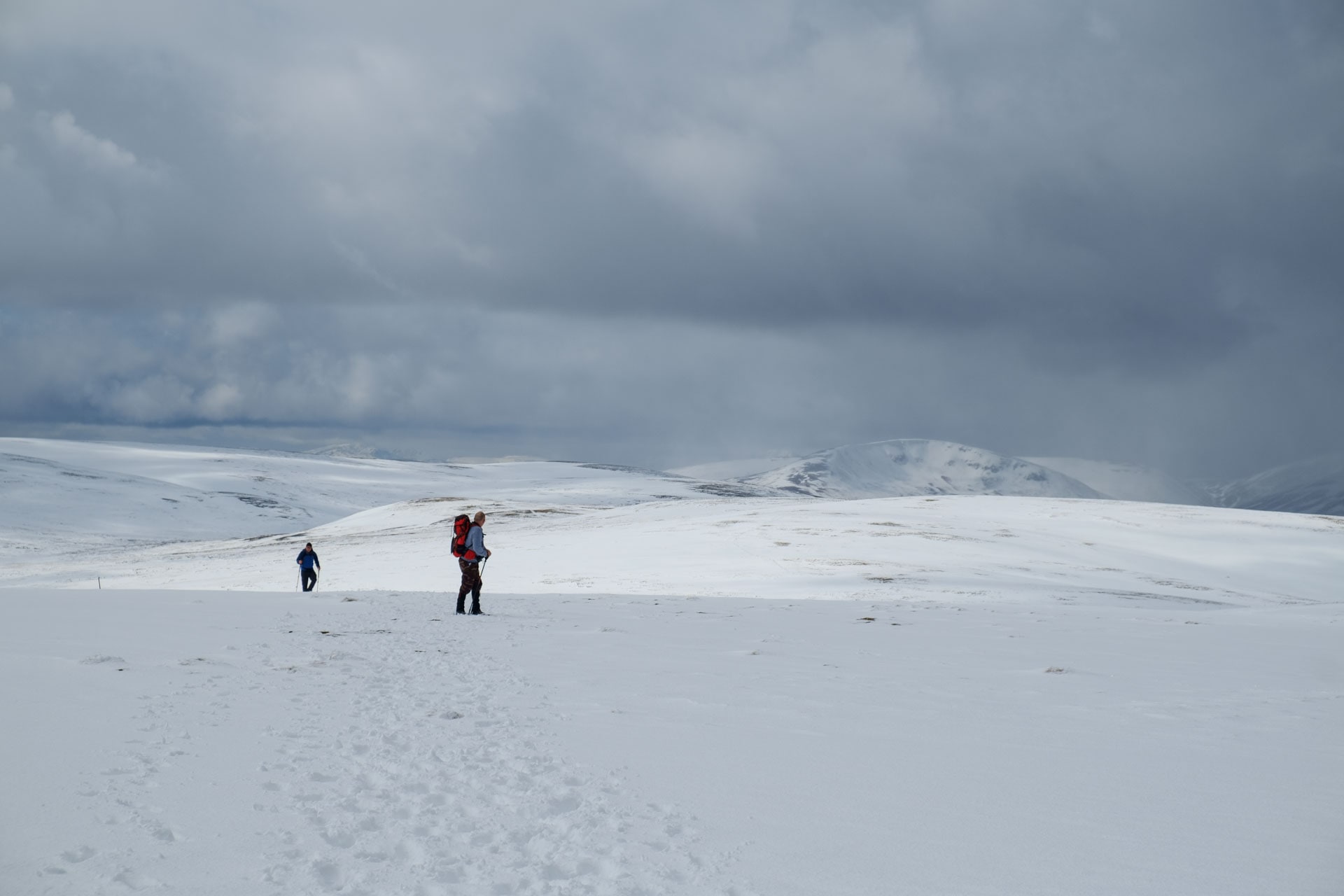Conditions in the UK mountains are notoriously challenging. Here are our top tips on how to predict, interpret and understand winter conditions
A version of this skills feature was first published in the February 2018 issue of The Great Outdoors.
1. Get a forecast
Before you plan your day out in the mountains, it’s important to consult a weather forecast specifically optimised for upland areas – and an avalanche forecast too. The best links for UK walkers can be found on our weather page.
There can be much variation in conditions between different mountain areas, which is why it’s important to consult forecasts before making firm plans. If you have your heart set on the Cairngorms but the weather looks significantly better in Glen Coe, for example, it could be wise to switch venues. The flexibility to choose a walking area that avoids poor weather is the best tactic for having an enjoyable day out.
In Scotland, don’t forget to consult the avalanche forecast (links on our weather page). The same principle for planning applies.
For both weather and avalanche conditions, it’s a good idea to follow how conditions develop over the days (and even weeks) prior to your trip. The more information you have, the better.
2. Take high winds seriously
Wind speed can make a dramatic difference to your safety on the hill. High winds will slow progress, increase the effort required to travel, prevent communication between party members, and could even blow you over. It can also compound risks from visibility, avalanche hazard and cornices.
Although you should have a healthy respect for a forecast that predicts high winds, it’s worth bearing in mind that the forecast speeds are likely to only be experienced on the windiest places (cols and ridges). If 20-30mph winds are due, it’s a good idea to plan your route to avoid windy spots as much as possible – stay on the lee side of the hill, and stay off ridges and out of saddles if you can.
Ferocious winds can affect many British mountain areas in winter, especially the Cairngorms where gusts of over 80mph are not uncommon. Take the threat of high winds seriously.
3. Be avalanche aware
Snow blows off windy areas and accumulates in sheltered areas, creating windslab. If it’s lying on steep ground, it may pose an avalanche hazard – 30-40˚ is a key danger area. A wide variety of other snow types and conditions can also pose an avalanche hazard, especially late in the season when melting snow can create wet slides.
In Scotland, consult the Scottish Avalanche Information Service. Here you’ll find out the forecast hazard level, an estimate of the likelihood of avalanches. You’ll also find out how the hazard varies from one side of the hill to the other and at differing altitudes. If you’re not in Scotland then you’ll need to make your own observations on the ground. For more information, see this article on avalanche awareness.
The SAIS have also published a free guide covering how to interpret their forecasts.
4. Watch out for cornices
A cornice is an overhanging lip of snow that builds up on the lee of a ridge or plateau rim. These can be surprisingly large, especially late in the season (late February through to May in some areas), and they present risk to walkers both below and above.
They can collapse on you if you’re beneath them. This is more common in warm conditions and later in the season, but it can happen at any time. They can also collapse if you’re foolish enough to stand on one. If you’re walking in an area where cornices may be present (especially if visibility is poor), stay well clear of any edges.
5. Take temperature into account
A wide variety of temperatures can be experienced in winter, from well above freezing to well below. Above freezing, you’ll need good waterproof and breathable garments, and you may need to vent your clothing to prevent yourself from overheating and wetting your jacket out from perspiration. If it’s well below zero and therefore dry, you might find it helpful to pack away your waterproofs and wear a windproof or softshell over appropriate layers instead – your priority will be to minimise wind chill.
Temperature also has a big impact on conditions underfoot. When snow thaws it becomes wet; if it then drops below zero the snow will refreeze, becoming very hard and icy. This is ideal for walking. Soft and fluffy powder can be hard to walk through if it’s more than a few inches deep. Therefore, the temperature will affect the extent to which you will need to wear crampons or snow shoes.
Cold, dry snow that has not thawed or bonded is also easily transported by wind. In cold conditions after fresh snowfall, winds can create heavy spindrift conditions – this can be challenging to walk in or perform key tasks such as navigating and staying fed and hydrated. It also has a huge impact on visibility. You’ll need goggles to cope with such conditions.
6. Don’t forget visibility and snow cover
Mountain forecasts describe the anticipated cloud level and visibility, so it’s easy to plan for atmospheric visibility – but it can be more difficult to anticipate snow cover, which will affect the difficulty of navigation if paths and other features are buried.
This is another reason to follow the daily fluctuations in conditions before your trip. The effect of wind means that snow is not often distributed evenly across the mountain – ridges will often be blown clear of deeper snow, whereas corries, valleys, gullies and hollows will accumulate it. Having a picture of how these factors have developed before your visit will help you to anticipate the impact of lying snow on visibility and hence navigation.
7. Take it steady
With experience, your planning for winter conditions will improve as you’ll be able to more accurately anticipate what it will involve. Plan conservatively at first, choosing good-weather days for more challenging walks, and poor-weather days for low-level walks where you can practice skills. Pack according to the weather and conditions and be prepared to change your plan.
Header image © Roberto Caucino / Shutterstock










